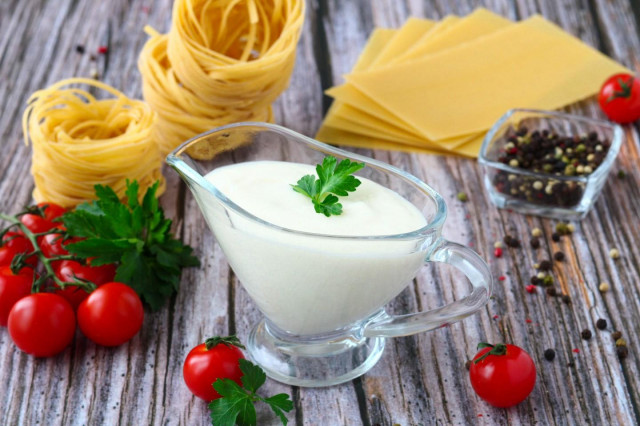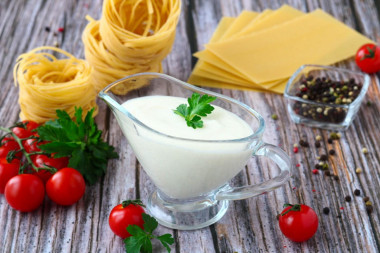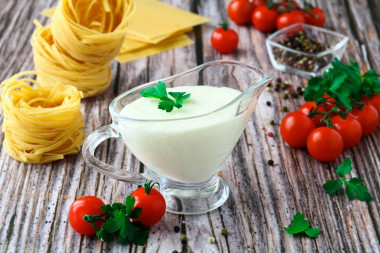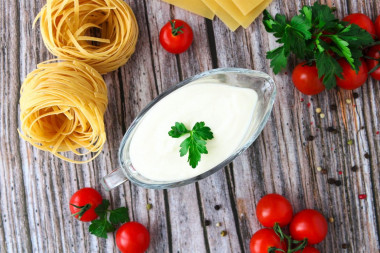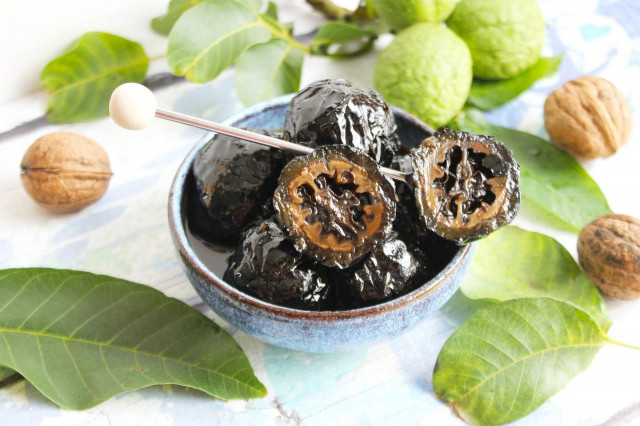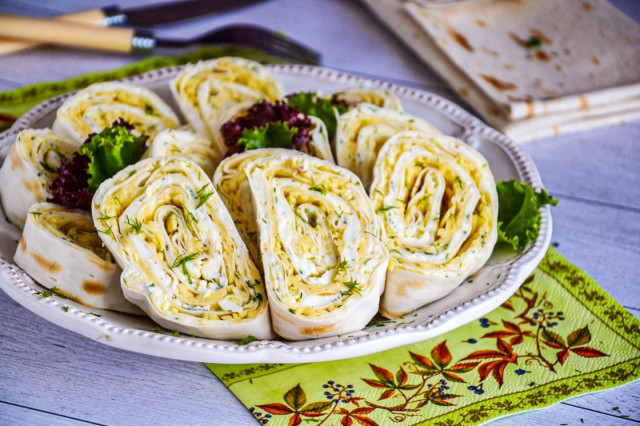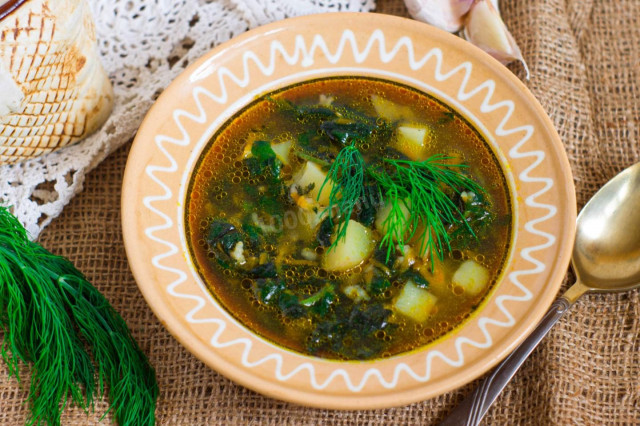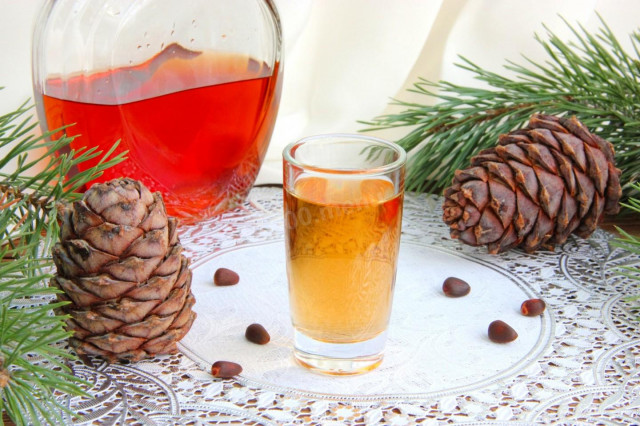Composition / ingredients
Step-by-step cooking
Step 1:
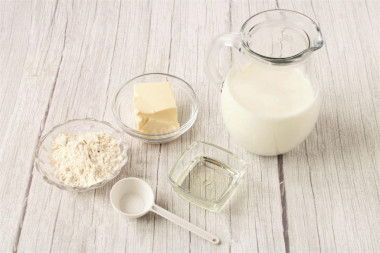
How to make a classic white bechamel sauce? Prepare the necessary ingredients. Use odorless vegetable oil. Milk should not be cold, heat it slightly over low heat. This will make it easier to make the sauce homogeneous.
Step 2:
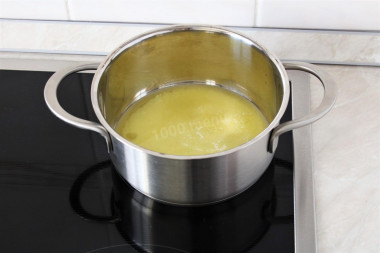
To prepare the sauce, take a thick-walled saucepan or saucepan. In this case, do not use enameled dishes so that the sauce does not stick to the bottom. Melt the butter in a saucepan over low heat.
Step 3:
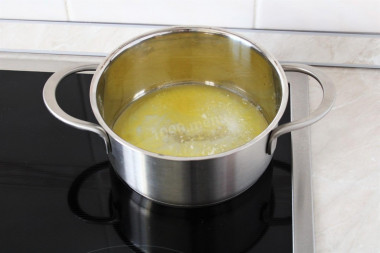
Add vegetable oil to the pan, mix well.
Step 4:
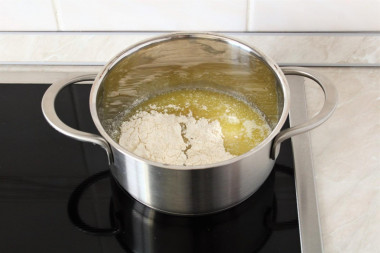
Pour the sifted flour into the butter, mix thoroughly until the lumps disappear. It is better to do this with a whisk, it is easier for them to make the mass more homogeneous. It's harder to do it with a spoon. Fry the flour over low heat with constant stirring until golden brown.
Step 5:
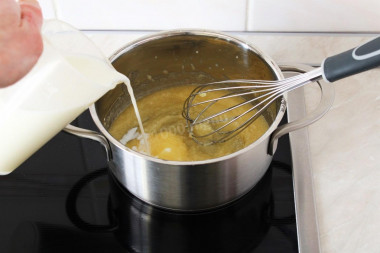
Pour warm milk in a thin stream in small portions (3-4 tablespoons each). It is very important to mix everything actively at the same time, until each portion of milk is completely combined with the flour mass.
Step 6:
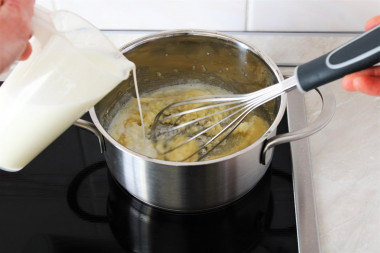
The most important thing is not to rush. Add milk gradually. If you pour a lot of milk at once, the formation of lumps is inevitable. With active stirring, pour in all the milk in parts.
Step 7:
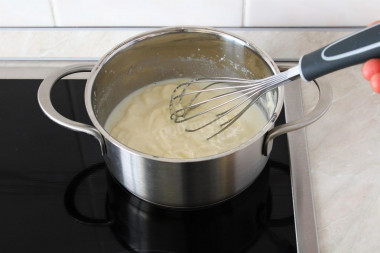
Mix the sauce thoroughly until smooth. Add salt to the sauce.
Step 8:
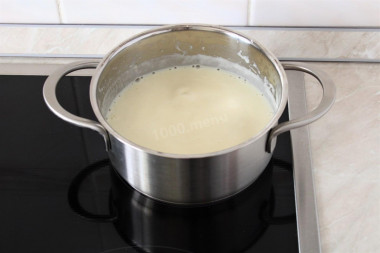
Cook the sauce over low heat until the desired consistency. Be sure not to forget to stir constantly so that the sauce does not burn and does not become lumpy. If the sauce is too thick, add more milk. If on the contrary, liquid, boil it to the desired density. But keep in mind that when the sauce cools down, it will be thicker.
Step 9:
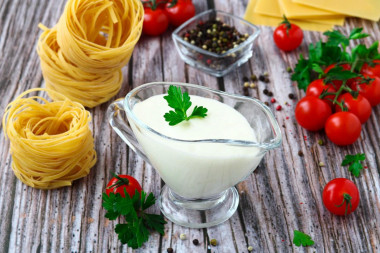
Use bechamel sauce to prepare various dishes or as gravy. Bon appetit!
At the end of cooking, various spices can be added to the bechamel sauce. The choice of which depends on the dish for which the sauce is used.
Use oil with a high smoking temperature for frying! Any oils are useful only until a certain temperature is reached - the point of smoking, at which the oil begins to burn and toxic substances, including carcinogens, are formed in it.
Unrefined oils, with rare exceptions, have a low smoking point. There are a lot of unfiltered organic particles in them, which quickly begin to burn.
Refined oils are more resistant to heating, and their smoking point is higher. If you are going to cook food in the oven, on a frying pan or grill, make sure that you use oil with a high smoking point. The most common of the oils with a high smoking point: refined varieties of sunflower, olive and grape.
Caloric content of the products possible in the composition of the dish
- Whole cow's milk - 68 kcal/100g
- Milk 3.5% fat content - 64 kcal/100g
- Milk 3.2% fat content - 60 kcal/100g
- Milk 1.5% fat content - 47 kcal/100g
- Concentrated milk 7.5% fat content - 140 kcal/100g
- Milk 2.5% fat content - 54 kcal/100g
- Butter 82% - 734 kcal/100g
- Amateur unsalted butter - 709 kcal/100g
- Unsalted peasant butter - 661 kcal/100g
- Peasant salted butter - 652 kcal/100g
- Melted butter - 869 kcal/100g
- Vegetable oil - 873 kcal/100g
- Salt - 0 kcal/100g
- Wheat flour - 325 kcal/100g

